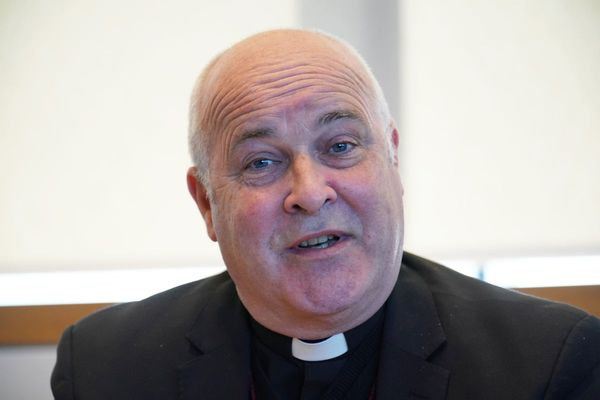
“Probably half the people here work for the government,” I was told at the Union Pub in Washington, DC, on election night. I talked to a few of them, and none could go on the record, which is understandable. For a decent number of US departments, you follow the chain of command high enough and you get the president.
Talking smack about either candidate (and potential future boss) was a bad career move, regardless of who won. Everyone in that pub was nervous, but no-one as much as the public servants. If the winner was Donald Trump, with his transparent hostility towards much of the architecture of government and his tendency to chaos, they knew they were in for a difficult and weird few years.
The early cabinet picks have started to come through. On Monday he appointed former congressman Lee Zeldin as chief of the Environmental Protection Agency. Zeldin announced that his first priority was to “roll back regulation” and he has a history of voting against environmental protections. This is in keeping with Trump’s approach last time he was president — before Scott Pruitt was appointed EPA chief in 2017, he had sued the agency 14 times as Oklahoma’s attorney-general to try to block Obama administration rules intended to protect the nation’s air and water.
Elsewhere, Elise Stefanik, a pro-Israel supporter of Trump, has won the nod as UN ambassador, and immigration hardliner Tom Homan has been named “border czar” (he’s spent the years since he was head of US Immigration and Customs Enforcement as a Fox News contributor, if that gives you any idea).
For an indication of what the next year holds for government workers, let’s look at 2017, the first year of Trump’s first stint in the White House. His slogan “Drain the swamp” was aimed primarily at career bureaucrats in Washington, and he governed like it. For cabinet positions, he routinely placed people in charge who had previously otherwise opposed the work of the department they now headed (such as Pruitt), or who had straight up called for its abolition (such as Rick Perry heading the Energy Department).
That’s when he filled positions at all though. Nearly two months into Trump’s presidency, there were more than 2,000 administration positions he was yet to fill.
That’s the practical side of things. More ominously, there are explicit threats to people’s employment, and potentially their safety. In October, the American Accountability Foundation — an organisation funded by the Heritage Foundation, which authored Project 2025 — released a “DHS bureaucrat watchlist“. It named 51 civil servants who the foundation claimed could not be trusted to enforce Trump’s hardline policies on immigration, and thus should be fired. The list included a tip line for recommending additions of who it called “subversive bureaucrats”.
Trump’s incoming administration is causing anxiety for many in government, and some form of confrontation feels inevitable. In response to the result, Everett Kelley, the national president of the American Federation of Government Employees, put out a statement insisting the “union will not stand by and let any political leader — regardless of their political affiliation — run roughshod over the Constitution and our laws”.
Kelley said that during Trump’s first term, his administration “attempted to gut” negotiated union contracts and “downsize and relocate federal agencies at great disruption and cost to taxpayers”, as well as replace thousands of non-partisan civil servants with “political appointees who would blindly do his bidding”.
Other groups dedicated to public service employees have said similar things.
Late in his presidency, Joe Biden attempted to cut Trump off at the pass by strengthening protections against political interference for federal workers. One suspects more of this sort of thing is to come in the months ahead.
Biden will meet with Trump at the White House on Wednesday. Spare a thought for how weird it must already be in that place. As Isaac Saul from Tangle has pointed out, “An incumbent president is sharing a White House with a vice president who replaced him on the ticket against his wishes, and then lost.”
Last week, Biden promised to ensure his team assisted Trump’s incoming administration with a “peaceful and orderly transition of power”. As with Harris’ concession speech the day before, it was the dispiriting attempt to pull a moral victory from the jaws of this era-defining defeat.
All Democrat leaders can console themselves with — having been decisively beaten by a man they told the American people was a fascist, a threat to democracy and a conman — is that they will help Trump once again take over the levers of government, and that they will offer him the kind of untrammelled access to power he denied them four years ago.







